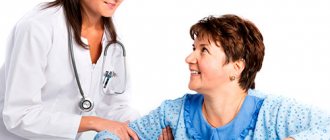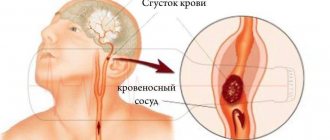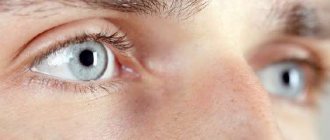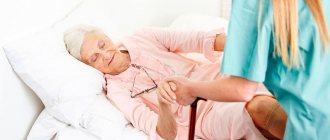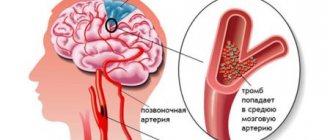Risk factors and causes of mental disorders
The main problems are metabolic disorders mainly in brain tissue and blood vessels, a sedentary lifestyle, and poor nutrition.
Risk factors include people aged thirty to sixty years, that is, the working population in the prime of life. According to statistics, men are more susceptible to the disease than women. It occurs more often in people with bad habits, especially smokers.
Taking medications in a toxic dose, chemical products, and vapors of toxic gases can have a negative effect. There may be a hereditary predisposition.
There are two main causes of stroke: spasm of the cerebral arteries and blockage of the vessel. The first depends on the functioning of the autonomic nervous system. If there is a failure in impulse transmission or severe stress, the muscle layer of the vessel contracts sharply.
Blockage of a vessel can be a consequence of the development of atherosclerotic lesions both in the head and somewhere in another part of the body. Over time, the atherosclerotic plaque ulcerates and a blood clot forms in its place. It is able to break away from the wall of an artery, for example, a lower limb, and reach the brain.
Compression of the vessel from the outside by a developing malignant or benign formation cannot be excluded as a cause.
Stroke: how to recognize and how to treat. Survival Instructions
sh: 1: –format=html: not found
Stroke is one of the most dangerous diseases that develops rapidly and does not give room for error - it is not a runny nose that can be “carried on your feet.” What to do if you or your loved ones have an attack, says blizko.by.
Back in the 19th century, a stroke was most often called a “stroke” and simply said “a stroke happened to him.” At the same time, it was generally accepted that strokes happen to nervous and emotional people.
Today, when more is known about brain stroke and its causes, one of the main characteristics remains the suddenness of the onset and rapidity of development of the disease. And up to 1/3 of patients die within a year after the first attack.
And these statistics have not changed for years, unfortunately.
Patient, what do you have? Ischemic or hemorrhagic stroke
In modern medicine, it is customary to distinguish two types of stroke: ischemic and hemorrhagic. The first occurs more often, in approximately 80-90% of cases, and is characterized by an acute disruption of blood supply to the brain.
Blood does not flow to the brain because the vessels are clogged or narrowed - the tissues experience oxygen starvation and begin to gradually die if the person is not helped in time.
With a hemorrhagic stroke, the process of brain damage develops more clearly, because the vessels simply rupture under the pressure of blood - an intracerebral hematoma is formed. Both conditions require immediate hospital treatment.
A person’s health after a stroke can be fully restored by providing assistance in the first 5-6 hours after the “stroke”. They are also called the “therapeutic window” or “golden hour”. If the patient was able to be transported to the hospital in the first hour, the prognosis for recovery will be higher.
Test yourself: a checklist for those who are afraid of a stroke
If you think that brain stroke occurs only in very elderly people leading a sedentary lifestyle, then here is one fact for you. In 2011, actress Emilia Clarke, who became famous for her role as Daenerys Targaryen in the cult TV series Game of Thrones, suffered a stroke.
The serious illness became known only in March 2020, and eight years ago the girl was on the verge of life and death and underwent two operations - then she was not even 30 years old. After this, it's time to pay attention to our checklist: it lists diseases and conditions that increase the risk of stroke.
And age does not play a major role here:
- Pathologies of the cervical spine (osteochondrosis), constant pain in the upper spine
- High blood pressure that cannot be corrected
- Chronic diseases of the heart and blood vessels
- Blood diseases associated with blood clotting (thrombophilia)
- Acute circulatory disorders (so-called transient attacks), sometimes called pre-stroke
- The appearance of cholesterol plaques
- Frequent stress with the inability to “reset” negative emotions
- Diabetes
- Hereditary factors (if the father had a stroke, the risk of it occurring in children is higher, but this is only a factor, not a pattern)
- Bad habits and obesity
- Age over 50 years and male gender (as statistics say throughout the world).
If two or more points coincide, think about what you can do for yourself and your health. Perhaps it will be getting rid of a bad habit or an extra stop on foot to work, for whomever is closer.
Signs of a stroke: crooked smile and strange speech
A stroke develops quickly, but the patient and his loved ones still have time to react and pay attention to some signs of the disease. Some of them look especially bright and are remembered by the first letters of the word IMPACT (Smile-Movement-Articulation-Decision):
- Smile. A person cannot normally stretch his lips in a smile, one of the corners of the mouth “hangs down”, there is visible asymmetry of the face
- Movement. It is impossible to raise both arms or legs; one of them rises noticeably more slowly, and sometimes hangs like a whip. Sometimes the patient complains of general weakness in the limb; it “does not obey”
- Articulation. The person cannot speak at all or pronounces words unclearly, cannot understand the meaning of simple phrases
- Solution. If you have noticed one of these symptoms in yourself (for example, smiling in the mirror) or in someone close to you, do not hesitate: time is working against you.
After detecting any symptom, you need to call 103 and, if possible, clearly report the observed picture. If you have a stroke, do not be afraid to disturb your neighbors or relatives - this condition cannot be “endured on your feet” without consequences.
There are other symptoms of stroke that can complement the overall picture of the disease.
- Severe headache that cannot be relieved with conventional medications and cannot be tolerated
- Confusion: the person does not answer questions. It seems that he does not hear, although a couple of minutes ago he was having a normal conversation
- The person suddenly loses consciousness or falls to one side
- Vision in one eye decreases or blindness suddenly occurs
- Sharp convulsions against the background of health.
As neurologists note, any sudden deterioration in the condition that develops quickly or at lightning speed can become a sign of a stroke. And there is only one way out - see a doctor. Even if it seems that everything is over and the pain has gone away, you need to call the doctor and go to him: the stroke may recur, and in a more severe form.
Rehabilitation after a stroke: prognosis for recovery
Life changes after a stroke - this fact is worth remembering both for the patient and his loved ones. Thus, as a result of vascular rupture, up to 75% of patients become disabled, their speech, memory and movement suffer.
When blood vessels are blocked, the prognosis for recovery is more favorable, especially if the patient is transported to the hospital in a timely manner and with adequate treatment. If doctors manage to restore blood supply to the brain in the affected area and do this in a short time, then the person will be able to return to normal life.
But for this you will have to work, especially in the first months after discharge from the medical institution. In short, rehabilitation after a stroke looks like this:
- Taking medications (usually lifelong or long-term) that help thin the blood - this is necessary to prevent vascular thrombosis; other groups of drugs are also prescribed. In everyday life they are called “brain” or “for memory”
- Classes with a speech therapist. Speech areas after a stroke suffer especially severely and therefore efforts are required to fully restore coherent speech, sometimes this takes months and years of work
- Regular physical activity. This can be either walking or training on exercise machines - the type and intensity is selected by the doctor
- Physiotherapy, along with basic treatment methods, patients can be prescribed acupuncture, paraffin therapy, balneotherapy
- Classes with a psychologist/psychotherapist. A stroke can be a very serious traumatic factor - just yesterday you were full of strength, but today you cannot even get up. In this case, it is necessary to work with a psychologist, and sometimes a psychotherapist, who can prescribe a number of medications for the treatment of depression after a stroke.
And at the same time, only 10% of patients in Belarus fully recover after a stroke.
That is why the principle best applied to this disease is: prevention is better than cure. Do you want to stay healthy for as long as possible?
Source: https://zen.yandex.com/media/id/5a2f92b78309050a69ccc0c7/insult-kak-raspoznat-i-chem-lechit-instrukciia-po-vyjivaniiu-5cb5a2ef501dc700b417a996?feed_exp=ordinary_feed&from=channel&rid=39964888 06.478.1569406444653.71604&integration=publishers_platform_yandex
Clinical picture of dementia
Mental disorders after a stroke can be divided into several groups:
- Asthenic;
- Explosive;
- Apathetic;
- Euphoric.
Based on the time of occurrence, we can distinguish early ones, those that arise several months after the development of the pathology, and late ones.
The asthenic type of mental disorder is characterized by low interest in the outside world, increased sensitivity to external stimuli, and decreased performance. There is a disorder of memory, attentiveness, and speech inhibition.
The asthenic type includes dementia - a sharp decrease in cognitive ability and loss of once acquired skills, in other words, dementia. With dementia, patients complain of constant depression, dizziness, general malaise, and weakness.
The extreme stage of the disease is forgetting one’s own name, place of residence, date of birth, and the names of the most basic things.
Explosive psychopathy is the complete opposite of asthenia in emotional terms. Patients are highly agitated, quick-tempered, aggressive, and can make noise over the slightest reason. After an emotional outburst, a person feels much better, describing the current situation as a “loss of self-control.”
Apathy differs from the other two types of disorders in its complete indifference to the world around it. The patient feels neither aggression, nor sadness, nor joy. The absence of any emotions is accompanied by loss of appetite, constant drowsiness, and laziness. Against the background of apathy, schizophrenia can develop - a disorder of thinking and perception of the surrounding world, combined with delusions, manic ideas, paranoia and hallucinations.
Euphoria is an uncommon mental disorder. The person is in a relaxed state, in high spirits, without any special reason. In this case, the patient is slightly inhibited, experiences feelings of derealization, and experiences a periodic surge of strength and energy. Against the background of euphoria, asthenia and apathy may develop as a consequence of the exhaustion of the body’s reserves.
Features of the patient's behavior
Often, patients who suffer from hallucinations after a stroke begin to panic and believe that they will no longer be able to return to normal life. This is often said out loud.
The main problem is an unstable condition, the patient considers the visions to be real, and behaves accordingly.
Characteristic symptoms of a patient suffering from hallucinations after a stroke:
- listens carefully to sounds;
- waves his arms;
- crushes and breaks objects;
- speaks with fictitious interlocutors;
- strongly expresses fear, pain, resentment, sadness;
- tries to attract the attention of others to visions or conversation.
If the breathing centers are affected during an attack, the appearance of spots on objects or a change in sharpness is explained by physical, not psychological reasons. A thorough examination will help clarify the problem.
Without treatment for hallucinations, the patient may develop schizophrenia, since he is partially in a fantasy world.
Diagnostics
The diagnosis of mental disorders against the background of cerebrovascular disorders is made on the basis of the patient’s complaints, the presence of a stroke, objective studies of the doctor himself, and through instrumental confirmation.
The psychiatrist must externally assess the patient’s behavior, his body movements, speech, conduct psychological tests and talk in more detail about complaints, about what causes certain deviations in the psycho-emotional status.
Instrumentally, one can only confirm the presence of a stroke and cerebrovascular accident. For this purpose, magnetic resonance and computed tomography, Doppler sonography, and fundus examination are performed.
In a biochemical blood test, a decrease in the amount of lipids is possible.
Is it possible to relieve a patient from this problem?
You cannot choose medications on your own or on the recommendation of friends. If hallucinations are the result of a hidden brain pathology, a special set of drugs is needed.
Post-stroke visions are treated in the following ways:
- A complete examination to determine the cause of the disorder.
- Prescribing antipsychotic drugs.
- Individual or group psychotherapy.
- The introduction of drugs that relieve aggression in severe manifestations.
Very often, relatives of the patient are afraid to contact a psychiatrist so as not to receive an unfavorable diagnosis. But it is important to know that early manifestations of hallucinations after a stroke are quite amenable to correction, but an advanced condition is difficult and almost impossible to correct. Since such a patient becomes a source of danger to others, the most reasonable decision would be to insure yourself in advance.
Treatment
After making a diagnosis and determining the type of mental disorder, the doctor must first prescribe medications that improve cerebral circulation. These include Vinpocetine, Sermion, Phenilin.
If there is a risk of developing blood clots, it is necessary to use anticoagulants, for example, aspirin with constant monitoring of the INR. Nootropics such as Piracetam, Aminalon, and Pantogam are recommended for treatment.
In the case of explosive psychopathy, therapy with sleeping pills, anti-anxiety drugs, and sedative medications is necessary: Valocordin, bromides, tablets based on motherwort, St. John's wort and valerian.
For asthenia and apathy, adaptogens have a good effect: ginseng, eleutherococcus, radiola rosea, lemongrass. In some countries, loading doses of B vitamins are used.
Treatment for dementia includes not only the use of medications, but also psychotherapy. You need to talk to the patient, listen to his personal experiences, reassure, encourage, explain what’s what. Psychotherapeutic methods are used, including autogenic training, hypnosis, and psychoanalysis.
How can you deal with hallucinations on your own?
There are tricks that help eliminate the image that has arisen. During the next hallucination, try:
- Change lighting. Sometimes, for the hallucination to disappear, it is enough to turn on the light, go from the street into a lighted room, or, conversely, darken it.
- Look left and right, keeping your head still. After 15 seconds, repeat the movement. Usually 4-5 repetitions are needed to eliminate the image.
- Look at an imaginary picture and quickly blink or reach out to touch the vision.
- Start moving or complete a simple task. For example, get up and make a cup of tea.
Doctors also recommend quality rest and sleep. For some patients, this helps prevent hallucinations.
Prevention
Prevention of pathology is timely diagnosis and treatment of stroke, constant monitoring of the sick person. It is important to explain to the patient how to control his own emotions. All physical activity must be eliminated and an adequate work and rest regime must be established.
If you have a stroke, you should regularly undergo examinations, visit a cardiologist, neurologist, therapist, and, if you have the first symptoms of mental disorders, a psychiatrist.
It is very important to follow a diet aimed at reducing the consumption of fats and salt. This helps to avoid the growth of atherosclerotic plaque and the occurrence of a recurrent stroke.
The patient is required to constantly take general and biochemical blood tests, regularly check blood pressure levels, monitor breathing and heart rate, engage in physical therapy and spend more time in the fresh air.
Types of dementia
Depending on the affected area, the following types of dementia are distinguished:
- cortical;
- subcortical;
- cortical-subcortical;
- multifocal.
Cortical dementia develops as a result of alcohol abuse, as well as in Alzheimer's and Pick's disease. In cortical dementia, the affected area is the cerebral cortex.
The cause of subcortical dementia is hemorrhage into the white matter, as well as Parkinson's and Huntington's disease. The affected areas are the subcortical structures of the brain.
During a stroke, the cortical and subcortical areas of the brain are most damaged (cortical-subcortical dementia). Multifocal dementia develops due to a pathological process in different parts of the central nervous system.
History of rehabilitation after a stroke
My name is Natalya Efratova. In the summer of 2020, my husband had a left-sided stroke. Almost completely paralyzed. He spent a month in the city hospital. Then, with great difficulty, we transferred him to a rehabilitation center, where he simply lay for a month, and there was no talk of any full-fledged rehabilitation. A month later we were discharged in the same condition in which we were admitted. Sergei didn’t even learn to sit normally.
After such treatment, we decided to throw all our energy into recovery and decided to go to a private center. I looked through a lot of information on the Internet and caught my eye. From the very first contact, I felt a desire to help us cope with our problem.
We originally came here for two weeks, but stayed for a month and a half. My husband began to walk. We are not very confident yet and we have not yet achieved the desired result in our hand, but we were told that it will take time. But Sergei is already walking and this is already a big victory for us. Go to the official website >>>
Preventive measures
Many old people suffer from mental disorders. However, such diseases rarely occur in pensioners if they:
- play sports;
- do not suffer from loneliness and actively communicate with others;
- They please themselves by doing what they love: beading, fishing, etc.
It is important for children not to forget about their elderly parents and often delight them with their visits and give them their attention. For older people, even a phone call is enough for them to perk up and feel good.
Old age dislikes loneliness most of all. A person’s memory begins to deteriorate and various mental disorders appear when he finds himself on the sidelines of the seething stream of life and watches it from the sidelines, encountering only indifference around him. It’s a paradox, but pensioners living with relatives more often feel useless. So that the psyche of a mature person does not suffer from such experiences, you need to communicate with him every day and make him feel his own importance for his family. Older men and women are less likely to experience mental illness if relatives allow them to cook various delicacies, sew, and accept other simple help from them.
How to distinguish post-stroke visions from other complications
When diagnosing a person who has experienced an ischemic crisis, one should rely more on medical observations, results of tests and examinations. Often the patient is not able to adequately assess his own condition, and his complaints may not correspond to reality.
Difficulty breathing is also a common problem in the post-stroke period. It is possible only with the help of hardware monitoring to determine whether the parts of the brain responsible for breathing are really damaged, or whether this is a somatic hallucination.


